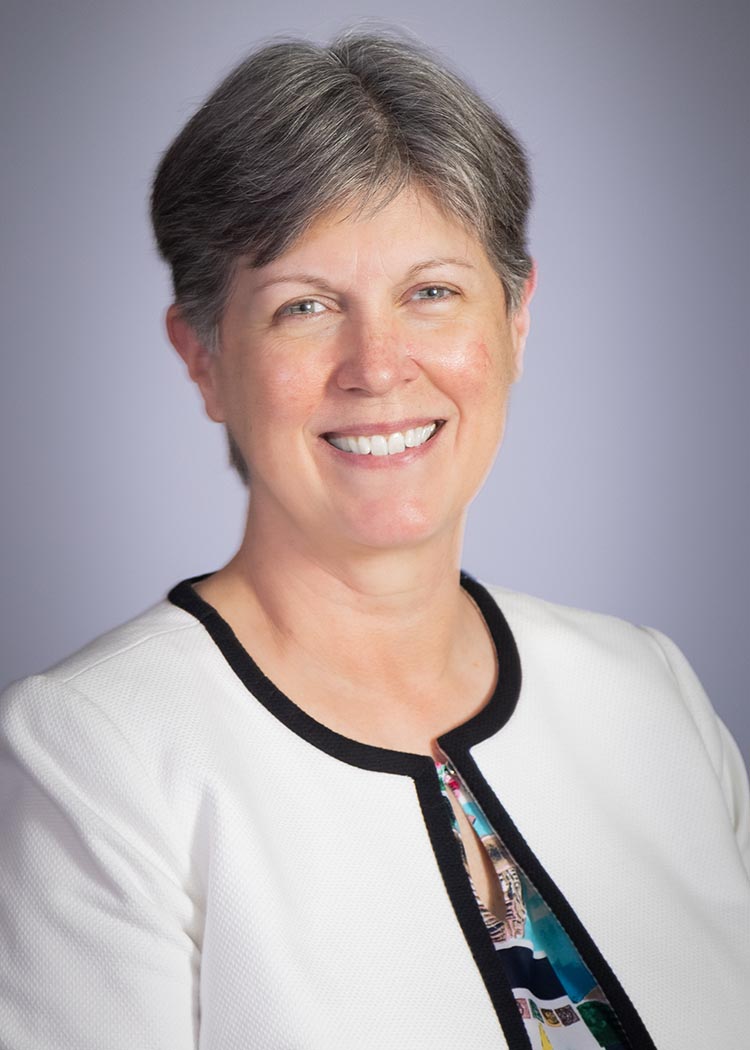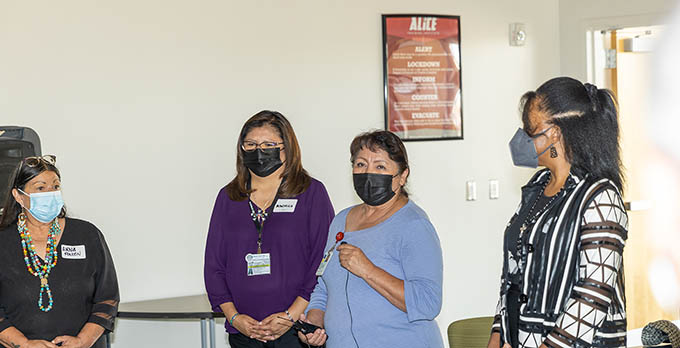Residents of Bernalillo County will soon have the opportunity to speak up about their health care needs. And the CEO of the state’s only Level I trauma hospital and county leaders are ready to listen.
“We really want to hear from our community about what their health needs are as we think about how we prioritize use of our resources to improve the health of the people of Bernalillo County,” said Kate Becker, CEO of UNM Hospital.
UNM Hospital and Bernalillo County are teaming up for series of Community Health Listening Sessions. The first five sessions will happen in-person in each commission district of Bernalillo County, with the final session happening in partnership with the Indian Health Services for the Native American community.
Next year, Bernalillo County residents will have the opportunity to once again vote on a mill levy that would extend a portion of property taxes to help fund the operational and maintenance costs at UNM Hospital. Last year that tax brought in over $115 million, which is roughly 10% of UNM Hospital’s revenue.

We really want to hear from our community about what their health needs are as we think about how we prioritize use of our resources to improve the health of the people of Bernalillo County
“We want to make sure that we're really good stewards of the resources that the folks of Bernalillo County are entrusting to us,” Becker said. “So, we asked the commissioners if they would partner with us on a series of listening sessions in each of their districts so that we can really focus in on each district. How are we meeting those needs? What are barriers to accessing care? And how can we begin to address those?”
“This partnership between Bernalillo County and UNM Hospital is critical to the health of our communities,” said Bernalillo County Commissioner Adriann Barboa. “We talk about public safety, and we talk about how do we increase the health and well-being of our communities? What are we exploring beyond the repercussions of COVID? Thankfully, we have a research hospital that can really dive into that.”
About 15% of the mill levy goes towards behavioral health services, an issue, along with substance use services, that both Barboa and Becker expect to hear as a recurring theme during the listening sessions.
“We know that the impact of social isolation from the pandemic has been really significant on our community for everyone, no matter what group you belong to,” Becker said.
Becker said UNM Hospital is always working to meet the community’s needs by making the time to truly listen. That effort has led to the new Behavioral Health Crisis Center currently under construction on UNM’s campus and voters approving bonds for the replacement of the UNM Children’s Psychiatric Center.
And for the people living in Barboa’s district of Southeast Albuquerque — those voices are diverse.
“We're talking about multiple languages and multiple cultures,” Barboa said.
Becker said UNM Hospital’s interpreter language services team is focused on breaking down barriers.
“It requires not only speaking the language, but being sensitive to the culture, so a lot of the work our team does is education for our staff members,” she said.
Access to health care is something Barboa also anticipates will be a concern for people living in her district.
“Transportation is always one of the biggest issues, and even though UNM Hospital isn't in the business of transportation, they are always considering that,” he added.
And Becker agreed, adding that the UNM Family Health Clinic in the Southeast Heights is a good example of a clinic with easy access to public transportation.
“Transportation is a good example of how we partner with the city and county,” she said. “You have to put your clinics near bus routes. You have to make sure that it's easy for people to get to the places where care is available.”
Becker said, on that note, access to primary care is currently being expanded on Albuquerque’s westside. “We know on the west side is where we found folks had to drive the furthest to access care. It’s where someone is most likely to go to an urgent care because they couldn't get to primary care.”
The mill levy comprises about 10% of UNM Hospital’s total revenue, but Becker said the community gets much more.
“We work within 100% of our revenue to figure out how we allocate services for whatever we perceive the community need to be,” she said. “How do we meet the needs of our community, and how do we best allocate our resources to make sure that we are supporting what we can in a way that's most impactful.”
Barboa said having the community be part of the discussion is critical to making those decisions.
“Trusting the expertise of our health care providers is important with the lived experience and expertise of our community,” he said. “Our lived experience is expertise in both how we provide health care and how we make policies that work for and by our communities.”
Exact dates and locations for all stops on this tour are still being finalized, but here are the first five listening sessions open to the public in Bernalillo County:
| Date | Time | District | Location |
|---|---|---|---|
| March 7 | 5:00 p.m. - 6:30 p.m. | 3 |
International District Library 7601 Central Ave. NE Albuquerque, NM 87108 |
| March 16 | 5:30 p.m. - 7:00 p.m. | 2 |
Los Padillas Community Center 2117 Los Padillas Rd. SW Albuquerque, NM 87105 |
| April 13 | 5:30 p.m. - 7 p.m. | 1 |
Patrick J. Baca Library 8081 Central Ave. NW Albuquerque, NM 87114 |
| May 11 | 5:30 p.m. - 7 p.m. | 4 |
Paradise Hills Community Center 5901 Paradise Blvd. NW Albuquerque NM 87114 |
| June 15 | 5:30 p.m. - 7 p.m. | 5 |
Los Vecinos Community Center 478 NM-333, Tijeras NM 87059 |
| TBD | TBD | Native American Community |
TBD |
